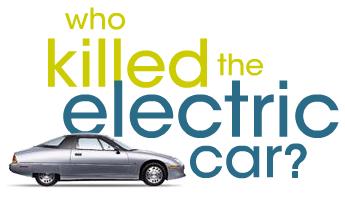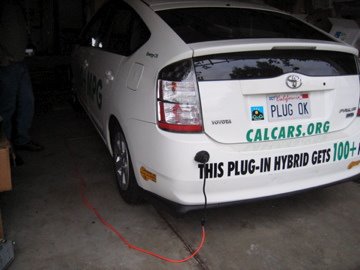
Cellulosic ethanol, the biofuel that differs from corn-based ethanol in that it can be made from pretty much any organic matter, has made an impression among people who matter.
Alan Greenspan, the revered former chairman of the Federal Reserve with a big distaste for irrational exuberance, recently sang its praises before a Congressional hearing on energy security. Greenspan said cellulosic ethanol is the only alternative energy source that could be produced in enough volume to make a dent in gas usage.
"You'll get an awful lot of investments [into this technology] coming in, especially if the numbers make sense, which I think they do," he said.
And last month Goldman Sachs (Charts), the world's largest investment bank, poured $27 million into Iogen, a Canadian-based biotech specializing in ethanol made from cellulose.
It used to be thought that this fuel, which some argue has the potential to replace more than two thirds of all gasoline used in the U.S., was decades away from commercial viability.
But high gas prices, a touch of technical innovation, and a healthy dose of capital may move that date up.
"There are a lot of people who think the technology is there," and could be competitive even if oil prices return to $30 a barrel, said Greg Bohannon, a managing partner at Greenrock Capital, a California-based private equity fund that focuses on renewable energy. "Why would Goldman Sachs invest in a company that's not going to be commercially viable for 10 years?"
Chances are, they didn't.
Beyond corn
Most ethanol currently produced in the U.S. is made from corn kernels.
Its benefits have been well documented in the press, especially since gasoline prices reached a record average of $3.06 a gallon last September, and haven't fallen much since.
Ethanol is clean burning. It's renewable. And it costs about a dollar a gallon to produce. Existing cars can run on 10 percent ethanol with no modifications, and they'd need only about $100 worth of tinkering to be 85 percent ethanol powered. And, perhaps most importantly, it's domestically produced.
But there are a few major problems with corn-based ethanol.
First, it takes a lot of energy to make it. According to the Department of Energy, most studies put the ratio as low as 1:1.4 - meaning that for every one unit of energy spent, only 1.4 units of ethanol energy are created. Indeed, there are some camps who believe producing corn-based ethanol actually results in a net loss of energy.
Second, an expensive infrastructure would need to be built if people started using mostly ethanol in their vehicles, since ethanol is water soluble and the existing pipelines and filling station equipment for gasoline are not completely water tight.
Third, there's not enough corn available. John Ashworth, a biomass expert at the Department of Energy's National Renewable Energy Laboratory, said corn could only supply about 12 to 18 billion gallons of ethanol a year, or about 10 percent of the nation's 140 billion gallon-a-year gasoline habit.
After that, ethanol would start to run up the price of corn, raising the cost of everything from eggs to Coca Cola. Of course the same problem would emerge with ethanol made with sugarcane or soy or any other food crop.
Wood chips to the rescue
Cellulosic ethanol has all the advantages of corn-based ethanol - there is no difference in the ethanol, only in the way it's produced.
But unlike corn-based ethanol, cellulosic ethanol can be made from a variety of things that might otherwise be considered waste – sewage sludge, switchgrass, plant stalks, trees, even coal – virtually anything that contains carbon.
Ashworth said there are an estimated one billion tons of such material available in the U.S. every year, enough for 100 billion gallons of ethanol.
While it's not feasible to actually go out and collect every ounce of that one billion tons, he said it's not unreasonable to expect ethanol to replace 40 billion gallons of gasoline in the near future.
"There's a lot of venture capitol out there that's willing to invest in cellulosic ethanol," he said. "You're likely to see some plants built in the next 12 to 18 months."
Entrepreneurs are in fact pressing ahead with ambitious plans.
"We know the technology is proven," said Jim Stewart, a spokesman for Bioengineering Resources Inc., or BRI, an Arkansas-based biofuel outfit. "It's at the point of commercialization."
Stewart said BRI uses a patented bacterial culture to transform organic matter into ethanol, and can produce a gallon of it at a fourth the retail cost of a gallon of gas.
He said the company plans to have 4 plants operating commercially within the next 16 to 18 months, but some industry-watchers believe it will be at least several years before cellulosic ethanol production will become commerically viable.
Vancouver-based Syntec Biofuel uses a different process to make ethanol. It turns the organic matter into gas and then moves the gas over a metal catalyst, which then turns it into liquid fuel. But the end result is the same.
Syntec hopes to have a full-scale plant up and running in three years, then plans to make most of its money by selling the plant's design to outside producers.
Company spokesman Jeff Eltom touted the efficiency of Syntec's process, saying it plans to get 10 units of energy out of every one unit they put in.
"We're not going to totally replace gasoline," said Eltom. "But we can take a big chunk out of what we import and become more energy efficient."
Temperance
Eltom's comment reflects the conventional wisdom in the alternative energy field: As the shift is made from fossil fuels to other options, it won't be any one single thing that meets the world's energy needs, but rather a mix of sources that will do so.
Still, not everyone believes cellulose ethanol will be part of that mix in the near term.
When the U.S. Energy Information Administration released its long term world energy outlook earlier this week, it projected a surge in U.S. oil consumption over the next 25 years, mostly due to transportation needs.
The agency said it does take new technologies into account when making its predictions, but that it believes cellulose ethanol is still too expensive to compete in the market place with corn ethanol and gasoline.
"It would take a breakthrough in the costs," said Andy Kydes, a forecaster at EIA. "It could happen, and we have hopes for it, but right now it's not on our radar."
Kydes did, however, ask for the names and phone numbers of the companies mentioned in this story, saying the agency would "look into it."
CNN










